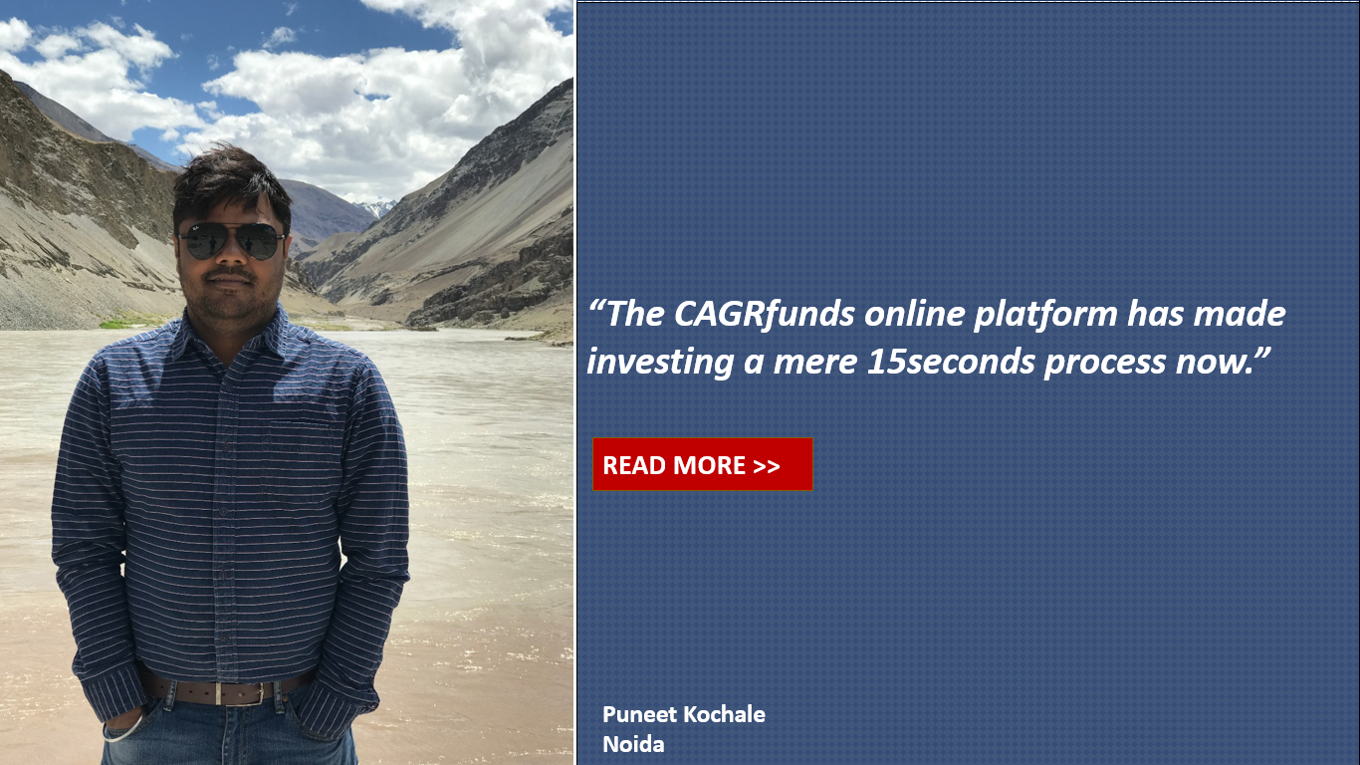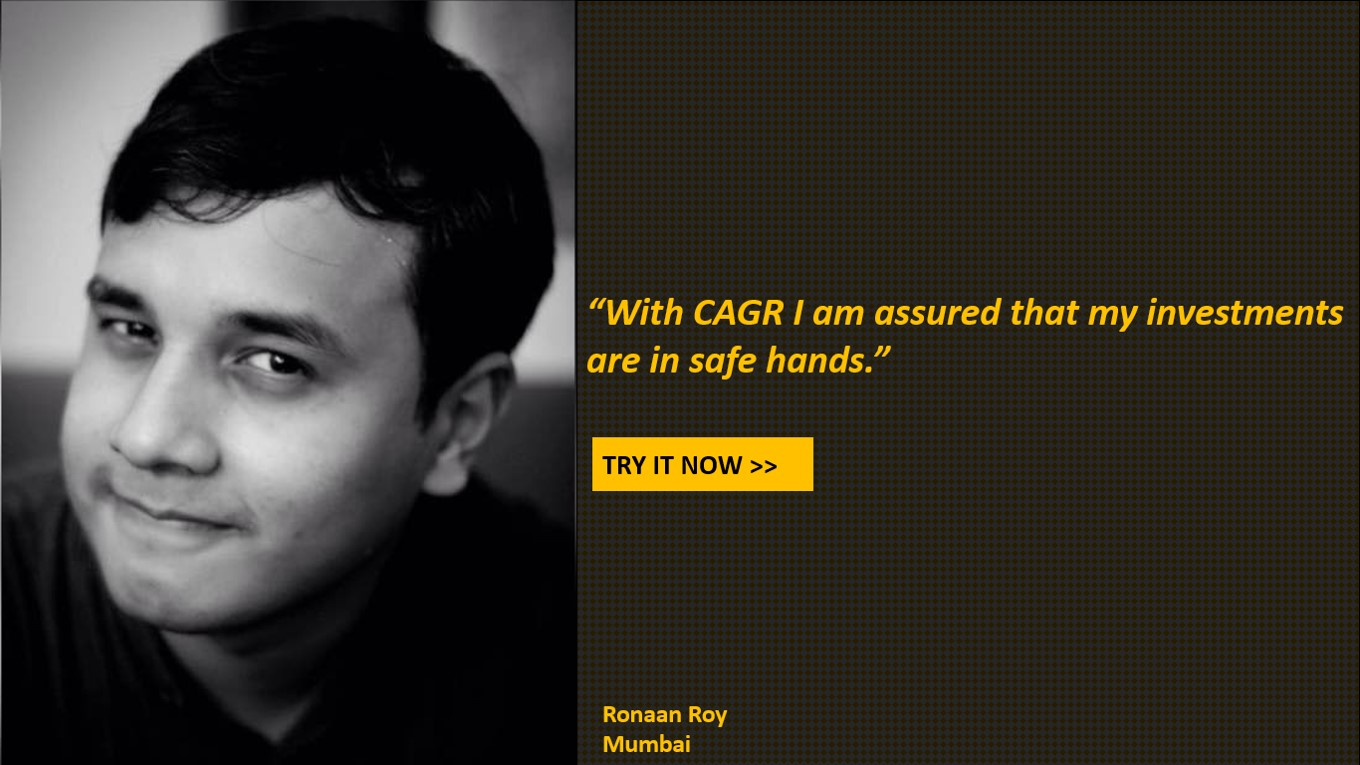A few years back I met my cousin and we were discussing how I should be deploying my recently started salary inflow. That was the first time I came across the term “Mutual funds”. I was never a finance person and never intended to be one. My uncle told me that I could do anything with my money but not invest them in mutual funds. He apparently had a 2 year experience with equity mutual funds and he had faced a significant loss on that front. So he was pretty much convinced that mutual funds were risky and had the potential of eroding away all your hard earned money. And so was I.
I met the CAGR team through a common friend. And trust me, I had no intentions of investing in any risky instrument ever. I was quite amused when I told them this and they responded by saying “Absolutely, you shouldn’t”. They asked me why I was so averse to mutual funds and I told them the short story that I just told you. They asked me to spend 30mins with them and they promised, they won’t sell anything to me.
So the next day, we met at one of the Bandra CCDs and thus started the myth breaking chain for me! Following are the facts that they exposed me to that day:
- Every investor has a certain “risk appetite”. If you love sky diving and have traded in stocks in the past, you certainly have the willingness to take some risk.
- Risk is not same as loss. If something is risky, it does not mean it will result in sure shot loss. You would not have been reading this if you have tried sky diving and if risk meant loss.
- Risk means a probability of losing money under a certain set of circumstances
- There are no free lunches in life. You cannot create a huge amount of wealth from banks / people / institutions who promise you a certain return, because guarantee for anything in life comes at a premium. And forgoing higher returns is the premium you pay for the guarantee you seek.
- Mutual funds have both equity and debt asset classes. So if you are a low risk investor who wants cannot witness some volatility in the investment from time to time, then you should restrict yourself to debt mutual funds and settle with lower returns
- But, if you can invest a certain fixed amount every month (SIP), let it stay invested for more than 3-5 years, witness some volatility from time to time and exit when markets are on an upswing (rather than panicking and booking profit during correction), then you can invest in a portfolio of equity funds.
It was a good half an hour knowledge session about various categories of funds, concepts such as asset allocation, risk profile, risk-return trade off and so on. They did not sell me anything, yet I was sold to their knowledge and the time they invested on me. I therefore expressed my interest to start and they suggested that I should start with a small amount to first gain conviction. Conviction not about good returns (that can only be evaluated over the long term) but how SIPs are a good way to start saving and creating wealth.
I am now a loyal CAGR client. I started with multiple SIPs as well as switched to tax saving mutual funds to save taxes.
I like the CAGR team not just for their consultative approach, but also for how they have designed their online platform. I invest my money in just two clicks and the dashboard is so informative that it gives you all the information you need as well as skips any unwarranted information. Very clean, simple, tidy without any information clutter. For someone like me with no financial knowledge, the DIY mode makes really easy for me to invest my money in mutual funds without any handholding / assistance from anyone else.
P.S. – I love the additions they make on their blogs. I feel a lot more in control of my money now!
Story has been contributed by Puneet Kochale who has been a CAGR client since January 2017. Puneet is an MBA graduate from FMS – Delhi.
Call / whatsapp us on +91 9769356440 for a free financial consultation! Alternatively, leave a comment on the post and we shall be happy to get back!




